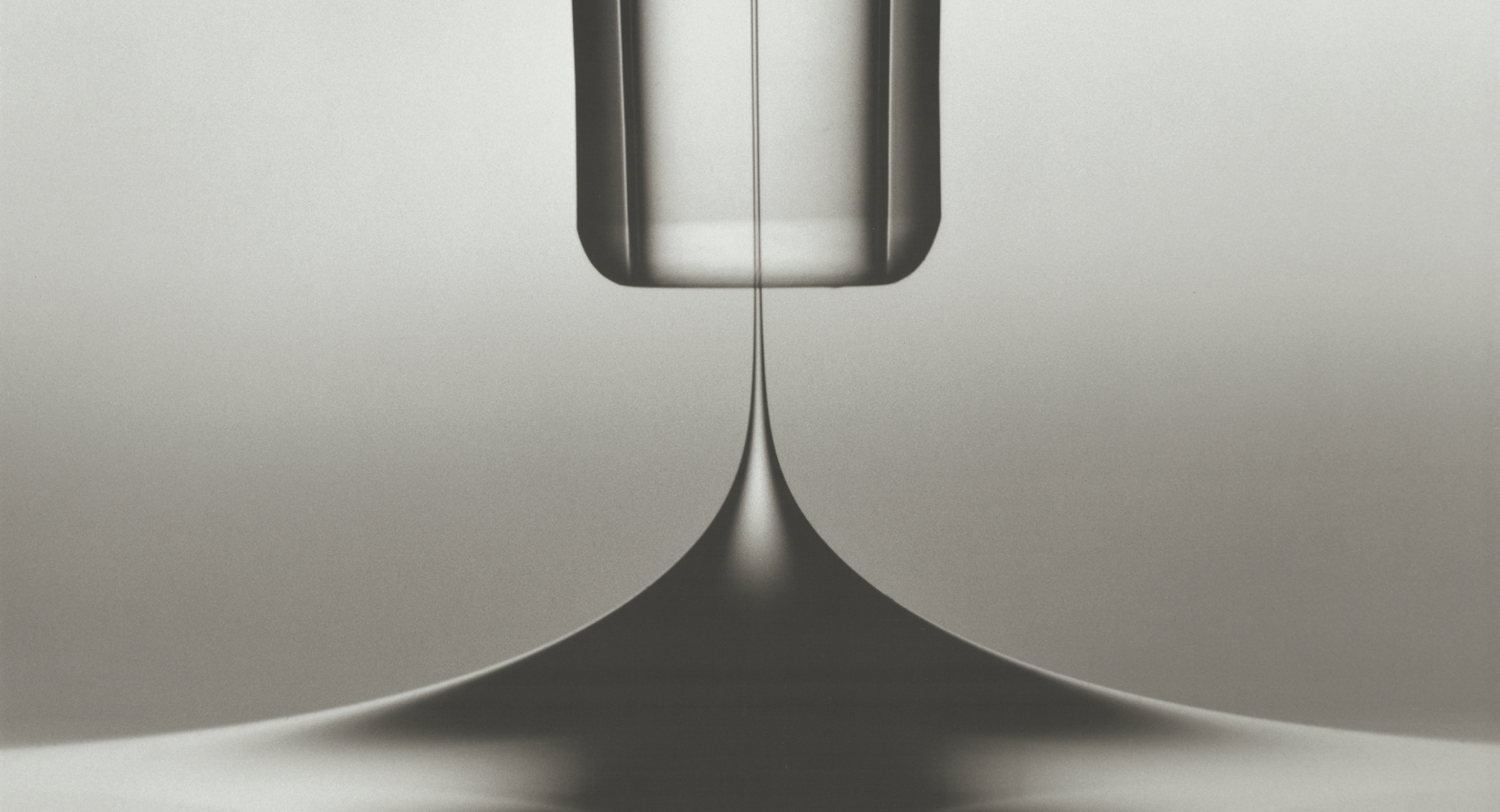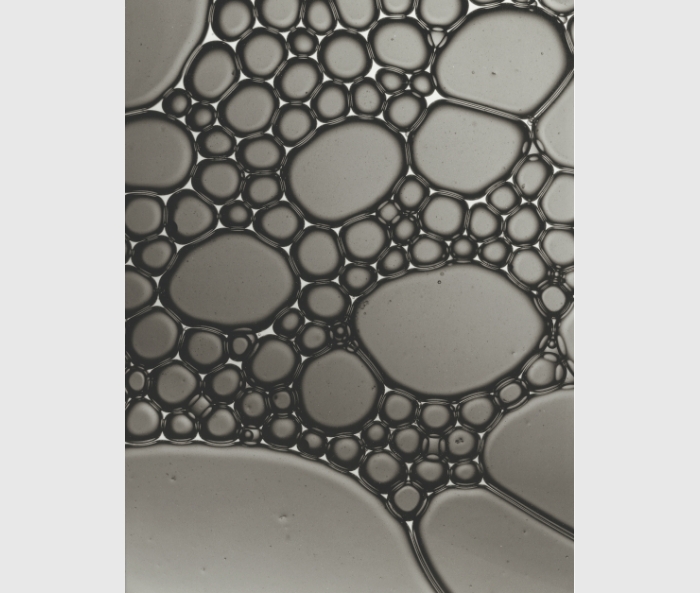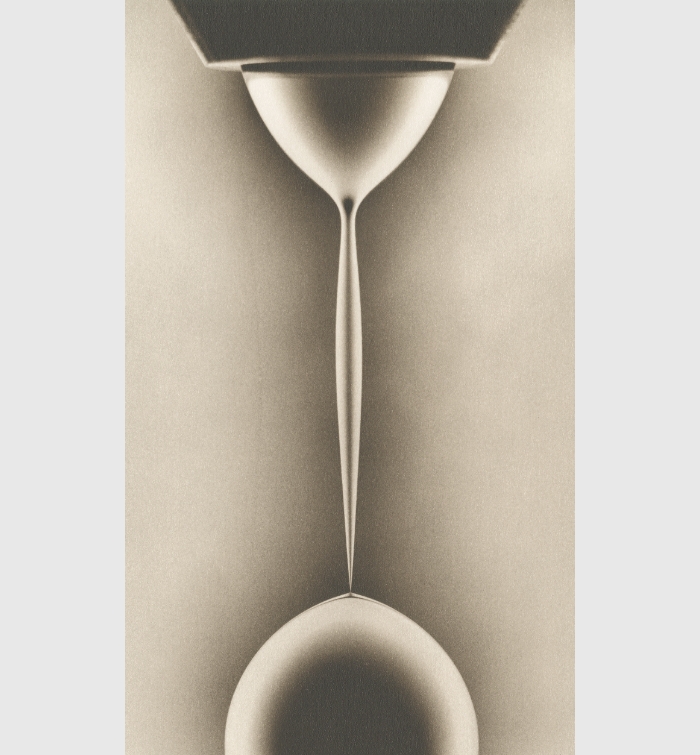
A few examples of Nagel’s high-speed physics photography. Selective Withdrawal (top) and Breaking Away: Glycerol in Oil (near right) are in the Smart Museum of Art’s permanent collection. (Photos courtesy Sidney Nagel/Smart Musem of Art)
Sidney Nagel receives the “lifetime achievement Oscar of physics.”
Physicists have a reputation for caring about the grandest questions: the formation of the universe, the collisions of black holes, the nature of time and space.
But Sidney Nagel was also curious about modest things. Why a spill from a coffee cup forms a ring instead of a spot. How a raindrop stretches and falls from an overhang. The shifting of grains of sand. He’s spent nearly 50 years looking into these everyday phenomena.
In January Nagel, the Stein-Freiler Distinguished Service Professor of Physics, accepted the 2023 American Physical Society Medal for Exceptional Achievement in Research. The award, sometimes called the lifetime achievement Oscar of physics, recognizes “contributions of the highest level that advance our knowledge and understanding of the physical universe in all its facets.”
Nagel is the second recipient of the award from UChicago. His longtime colleague Eugene Parker (1927–2022) was recognized in 2018 for contributions to space physics.

Nagel was one of the first to do research in the field of physics known as soft matter. Decades ago soft matter was not only little known, but disdained; today it is a primary focus in physics. “The thing that makes you a candidate for a prize like this is that you change a field,” says Thomas Witten, professor emeritus of physics. “Sidney changed many things.”
Nagel and his collaborators ran endless experiments to figure out why spilled coffee forms a ring and why grains of rice or coffee in a container pack more tightly when shaken. They took high-speed photographs of droplets separating and discovered a hitherto unseen world of physics. They developed the mathematics to explain how the breakup of ordinary liquids mimics features found not only in other materials but (at the largest scale) in black holes as well.
They also introduced the importance of “jamming,” the phenomenon that turns loose grains into a rigid solid when squeezed together—opening up a new line of intensive research across several fields.
Through it all, a theme emerged: “The idea that disorder and inequilibrium are crucial,” Nagel says.
The classic approach to physics is to envision the simplest system to find fundamental truths. For example, physicists often cool down their experiments to near absolute zero to remove confounding variables like temperature and the disorder that comes with it.
“But the thing is, most systems are not actually in equilibrium,” Nagel says. “The atmosphere is not. People are not. In fact, if you think about it, biology is set up to keep us from reaching equilibrium.”
Nagel wondered, “Is there an epitome of disorder, and if so, what are the principles that govern it?”

Nagel’s findings have laid the foundation for a deeper understanding of our world, as well as for applications in biology, materials science, and robotics. “The impact of Sid’s work goes far beyond any one particular phenomenon or any particular subfield of science, because the basic principles he uncovered are so widely applicable,” says Heinrich Jaeger, the Sewell Avery Distinguished Service Professor of Physics, and a longtime friend and collaborator. (At an annual event for the public called Physics with a Bang!, Nagel and Jaeger explode balloons, launch bottles across the room with gas, and blow smoke rings with garbage cans.)
Nagel’s approach is also known for another characteristic: an appreciation of beauty in the world. His office is lined with images taken of experiments, often in black and white, that showcase the perfect curve of a droplet about to fall or the sly lines of water and oil sliding past each other. Several of these are part of the Smart Museum of Art’s permanent collection. “The phenomena themselves have an aesthetic quality,” Nagel says, “that I don’t think of as separate from physics.”
